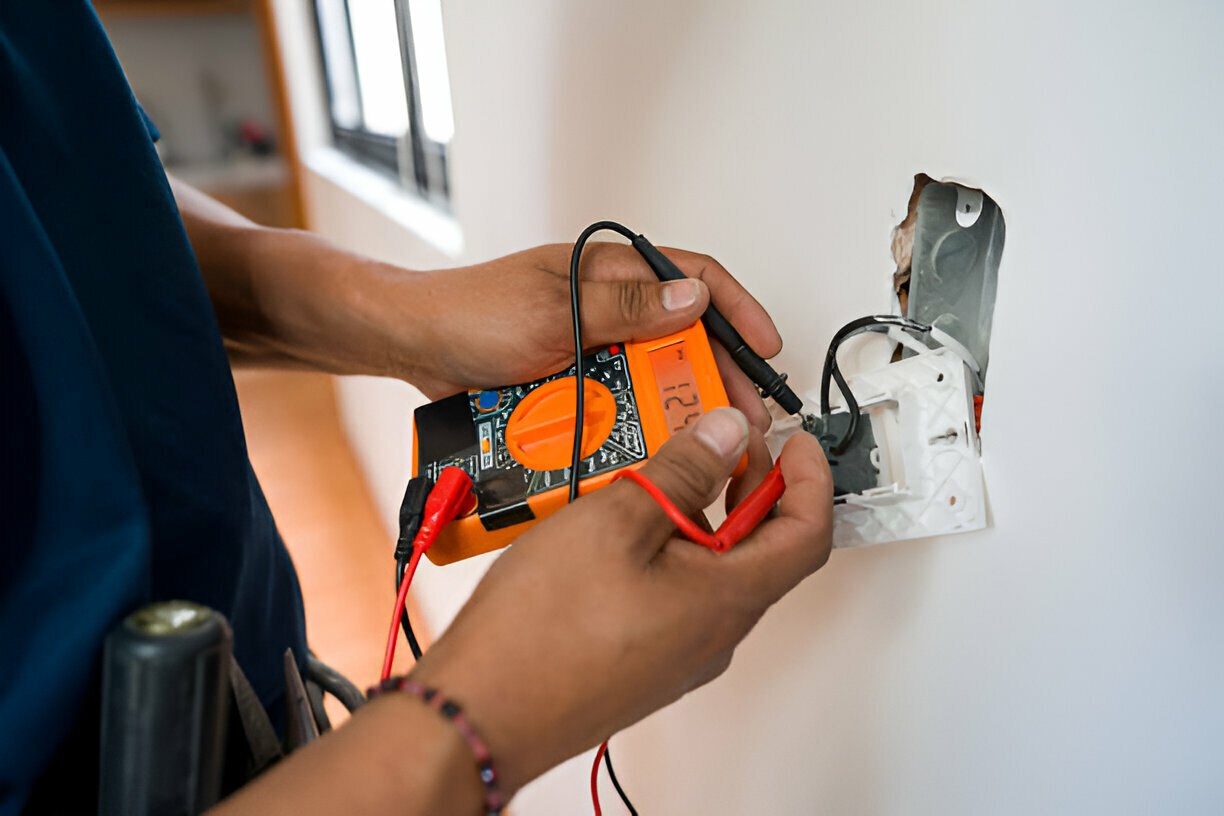Electrical malfunctions in your house could make you very unsafe and bring a lot of discomfort. This repair should be done on time to avoid fires, shocks, and appliance damage. Some common problems like bulbs flickering, overcrowded circuit breakers, and faulty outlets are some of the issues. The flicker lights usually mean loose wiring, which can cause sparks that may ignite fires.
Overloaded tripped breakers can prevent the system from burning out, but repeated tripping may indicate a more significant issue. Faulty outlets can deliver unstable power or do not work at all, and in other cases, they can cause electrical shocks. Do not ignore even the most minor and common electrical problems. Finding solutions for this problem early on will save your home from damage and ensure your devices function optimally.
You can also read about the sewer system installation practices and guidelines.
5 Common Electrical Problems In Homes
Here is a list of the most common electrical problems in your home you may encounter:
Tripping Circuit Breakers
Circuit breaker aims to safeguard your electrical system by automatically cutting the power in case of overloading. This reduces the chance of electrical fires and equipment damage. If a circuit breaker tends to trip regularly, it is a symptom of a faulty circuit.
The most frequent culprits are overloading and short circuits, which occur when too many appliances are plugged into one circuit, overloading it. Another reason that can cause the breakers to trip is a short circuit, which happens when a live wire unintentionally touches the neutral wire or a grounded surface. This unexpected link generates a surge of current that leads to the tripping of the breaker.
Flickering Lights
People tend to get annoyed by flickering lights. These lights are often caused by a connection problem between the switch, the outlet, and, sometimes, even the fixture itself. A loose connection might lead to sparks and heating, which can break the components and be dangerous if they start a fire.
As time passes, connections can become loose due to normal usage or vibrations in the house. Voltage fluctuations can also cause the lights to flicker. Minor deviations are usually standard, but massive or constant deviances cause lights to fade and flicker. These fluctuations can be caused by a utility company’s malfunctioning equipment or problems with your home’s electrical wiring.
Dead Outlets
Malfunctioning outlets are a common problem, mainly where electronic devices are widely used. Sometimes, several factors can lead to an outlet’s failure to function. One of the most common causes is a tripped circuit breaker. If an outlet is not functioning, you need to go to your breaker box and check if the circuit breaker that controls that outlet is tripped. A lack of power supply could also be due to an opened or damaged outlet.
Outlets’ internal components can wear out or malfunction due to power surges or other electrical problems. GFCI outlets are designed to trip and cut power if a ground fault occurs, decreasing the risk of electric shock.
Buzzing Sound From Outlets
A buzzing noise from an outlet or a switch may indicate a problem like loose connections or a faulty component. A loose wire can cause arcing, an uneven flow of electricity from one wire to another. Sparks cause heat, damage leads and other electrical components and may ignite a fire. Another reason for humming sounds is overloaded wires. When a circuit is overloaded, the wires and electrical components will get heated out of proportion. The heating process can set the components to vibrate and make a buzzing noise.
Burning Smell or Sparks from Outlets and Switches
Unpleasant burning odor or little sparks from outlets or switchboards make the gravity of the situation rigorous, and it needs to be repaired promptly. Be aware and do not overlook such red flags. Damaged outlets or switches are probably the reason for the burning smell or sparks. This damage may arise from an overloaded circuit, loose wires, or faulty circuit breakers or switches. Sometimes, a burning smell or sparks could imply that your electrical system might have a significant problem.
Conclusion
The civil engineering design process is a careful and collaborative effort that ensures our built environment’s safety, functionality, and longevity. From initial problem definition to final construction, civil engineers play a vital role in shaping the infrastructure that supports our communities. Their expertise and dedication are essential for creating functional and sustainable structures for future generations.





